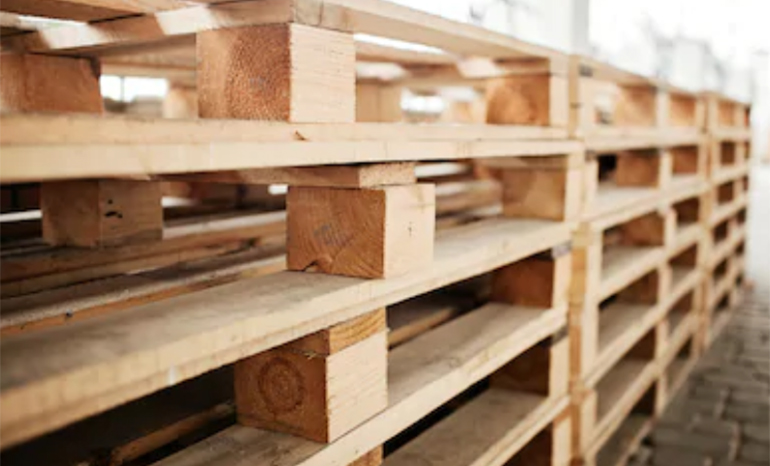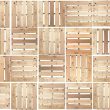Simple Steps to Limit Mold Growth on Your Pallets
We’re headed into warmer, humid weather—conditions which are ideal for mold growth. So, how can you prevent your wooden pallets from becoming affected by mold and rotting? Providing dry storage is key, but there are other, less obvious tips that we’ll cover below.

Aside from being unsightly, what can mold do to your pallets? In general, mold fungi have very little effect on wood properties. But, left unchecked, it is possible for fungus to grow into the wood and break down pits connecting the wood cells. This process increases permeability of the wood and will eventually result in a brittle, unusable pallet. The larger concern with mold on pallets is that spores can contaminate or grow on the materials stacked on top.
Tips to Limit Mold Growth
Since mold needs water to grow, controlling moisture is the best way to limit mold growth. However, even with proper precautionary measures, pallets can be rewetted during transit. The key is to not allow pallets to stay wet for any extended period of time as it does not take long for mold to attack.
Other tips are as follows—
- Store unused pallets indoors in open storage areas.
- Ensure good airflow in your warehouse to help keep pallets dry. We recommend “Big Ass Fans” to provide continuous airflow.
- Routinely inspect and clean your HVAC system.
- Do not store pallets in enclosed trailers in your yard. As the sun beats down, the internal temp rises quickly and mold can form within hours.
- If you must store in trailers outside, keep the doors open to let air circulate.
- If you have multiple trailers dropped in the yard, make sure to rotate them in the order they were delivered.
- Remove nearby source of mold spores including decaying wood.
- If your pallets can accept mild fungicides, periodically treat your pallets or lumber with fungicides or a concentrated solution.
Long-Term Treatments
If your pallets will not have contact with food products, ask your pallet provider about long-term mold guard treatment options (ranging from three to six months). This can involve application of prophylactic fungicides which are applied by dipping or spraying the lumber shortly after sawing. There are a variety of chemical treatments available; be sure to discuss your options with the pros at Rose Pallet. Or, for more information, consult this article on Mold Remediation courtesy of the National Wooden Pallet & Container Association.












